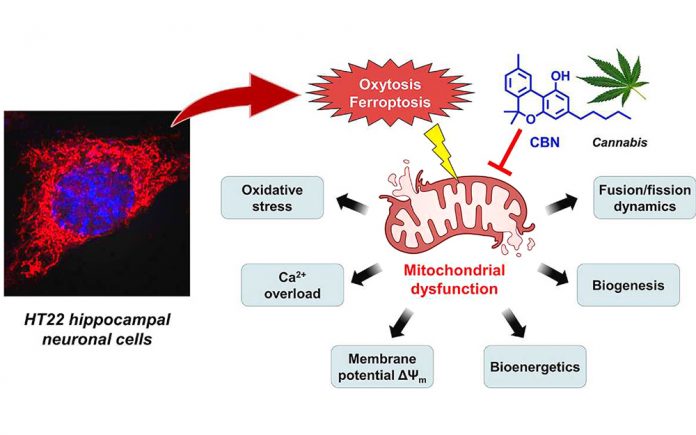
BY RUTH HILL R.N.
Dementia is defined as a group of progressive disorders that prevent individuals from independently brushing their teeth, taking a shower, or remembering their spouse’s name. Alzheimer’s (AD) is the most prevalent form of dementia. An estimated 6.5 million Americans aged 65 and older are living with Alzheimer’s in 2022. Seventy-three percent are age 75 or older. About 1 in 9 aged 65 and older (10.7%) has Alzheimer’s.
AD is the sixth leading cause of death more than breast cancer and prostate cancer combined. Unfortunately, the Alzheimer’s Association and other Internet medical sites are unfamiliar with the latest research on cannabis treatment for AD and neurological diseases. Their reliance on pharmaceuticals with accompanying toxic side effects is not keeping pace with the public’s use of natural herbs. There is no cure for AD.
Researchers found that the brain cells of those with AD have abnormal protein deposits called amyloid-beta plaques and tau neurofibrillary tangles. These plaques and tangles disrupt the brain cell function and cause apoptosis or cell death. Neuroinflammation is also a big part of AD and other neurodegenerative diseases.
Pharmaceutical Research
There are four approved drugs available, for treating dementia. Three are acetylcholinesterase inhibitors (rivistagmine, donepezil, and galantamine) and one is a N-methyl-D-aspartate (NMDA) receptor antagonist (memantine). The Food and Drug Administration granted conditional approval in June 2022 for a fourth drug, Aducanumab. This is the first drug to address the underlying biology of the disease. According to the FDA, Aducanumab reduces beta-amyloid plaques, which reasonably leads to a reduction in clinical decline due to AD disease. However, these drugs that directly target amyloid, or tau proteins, that damage cells, have not yielded significant clinical benefits for patients.
Cannabinoids to Treat Dementia
Research on medical cannabis has focused mainly on the major phytocannabinoids, delta-9 tetrahydrocannabinol (THC) and cannabidiol (CBD). Cannabinoids are known as potent anti-inflammatory compounds. CBD and THC both reduce the formation of amyloid-beta protein (G. Watt et al). However, relatively little scientific knowledge has yet been made for the minor phytocannabinoids.
Salk Institute Studies
There are many chemical pathways that lead to cell death. Research by Pamela Maher’s team, at the Salk Institute in La Jolla CA, looked at the process of oxytosis/ferroptosis. Her research was published on January 6, 2023, in Free Radical Biology and Medicine. Oxytosis is regulated cell death induced by an antioxidant depletion molecule called, glutathione (GSH). Ferroptosis is an iron-dependent non-apoptotic form of regulated cell death induced by potential anti-cancer drugs. There is growing evidence that oxytosis may cause AD.
Maher’s team treated nerve cells with cannabinol (CBN) and then introduced an agent to stimulate oxidative damage. They found that CBN worked by protecting mitochondria, the cell’s powerhouses, within the neurons. In damaged cells, oxidation causes the mitochondria to curl up like donuts. Treating the cells with CBN prevented the mitochondria from curling up.
To confirm the interaction between CBN and mitochondria, researchers then replicated the experiment in nerve cells that had the mitochondria removed. In these cells, CBN no longer demonstrated its protective effect. CBN is molecularly similar to THC without the psychoactive effects. THC works directly with the CB1 receptors. But CBD and CBN do not affect cell function through the CB2 receptors. Instead, they modulate the effects of cells.
Transitioning Science into Practice
Healing Essence and Synergy Wellness, produces small batches of cannabinoid isolates (CBD+ CBN) derived from natural cannabis flower, in organic sesame oil. Sesame oil is a long-chain triglyceride, that encapsulates the cannabinoids and creates a liposomal effect. This liposomal effect provides better bioavailability of cannabinoids.
The capsules enriched with CBN improve nerve health, organ function, and mood regulation. These capsules can be used for chronic conditions as well, taken every 4-6 hours, to maintain a constant dose of CBD and CBN cannabinoids in the body.
The challenge for the cannabis industry is disseminating this knowledge to other cultivators so this darling of the phytocannabinoids is available in dispensaries.
Learn more about how to use Marijuana Without the High on the 2nd and 4th Saturday of the Month from 11 AM to 2 PM at the Vault Dispensary Lounge. Call 760-866-9660 or send comments to hilruth@gmail.com










































